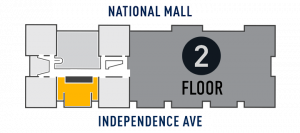To insure that drinking water during the Apollo missions did not become contaminated with microorganisms, chemical disinfectants were periodically injected into the water supply by the astronauts. A chlorine solution was used for the Command Module. To insert the chlorine astronauts used a specially designed syringe. This item is the knob portion of the syringe system used during the historic Apollo 11 lunar landing mission. NASA transferred it to the Smithsonian in 1970.
Display Status
This object is on display in Destination Moon at the National Air and Space Museum in Washington, DC.

Object Details
Country of Origin
United States of America
Type
SPACECRAFT-Crewed-Life Support
Dimensions
3-D (Overall): 5.4 × 7cm (2 1/8 × 2 3/4 in.)
Materials
Non-Magnetic White Metal Alloy (Aluminum Alloy)
Ferrous Alloy (Steel)
Teflon
Ink
Unknown Coating
Inventory Number
A19980057000
Credit Line
Transferred from NASA/JSC; must be offered back to NASA upon deaccession
Data Source
National Air and Space Museum
Restrictions & Rights
Usage conditions apply
For more information, visit the Smithsonian’s Terms of Use.